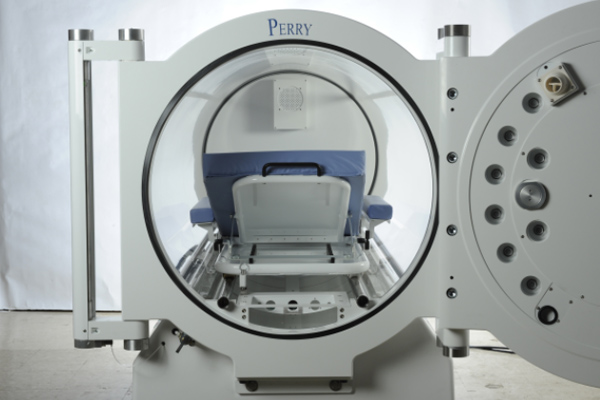Hyperbaric Oxygen Therapy: A Promising Approach for Radiation Cystitis in Prostate Cancer Patients

Elevating Prostate Cancer Care
Navigating Hematuria & Radiation Cystitis Post Brachytherapy
Prostate cancer is one of the most frequently diagnosed cancers in men in the United States each year, with 88,300 new cases of prostate cancer and 34,700 deaths from prostate cancer in 20231. With its alarming frequency, medical professionals tirelessly seek innovative treatments to enhance patient outcomes and quality of life. Among the diverse approaches, brachytherapy, an advanced form of radiation therapy, has emerged as a focal point in the fight against Prostate Cancer. However, this commendable treatment is not without its challenges, often leading to complications such as radiation cystitis and hematuria, causing significant pain and discomfort to patients for 5-10 years post treatment.
How HBOT Works as a Treatment for Hematuria & Radiation Cystitis
Hyperbaric Oxygen Therapy (HBOT) operates at the intersection of innovation and healing, offering a multifaceted approach in the treatment of hematuria and radiation cystitis resulting from Prostate Cancer treatments. At its core, HBOT capitalizes on the body's inherent ability to repair and regenerate tissues by administering pure oxygen in a pressurized environment. In the context of hematuria, the increased oxygen levels facilitate the mending of damaged blood vessels, reducing bleeding and alleviating the distressing symptoms. Similarly, in the case of radiation cystitis, HBOT works by revitalizing the compromised bladder tissues. Exposure to high-pressure oxygen aids in reversing the inflammatory processes induced by radiation, promoting cellular repair and reducing inflammation. This dual action not only mitigates the symptoms but also addresses the underlying causes, offering Prostate Cancer patients a non-invasive, efficient, and promising therapeutic avenue. By understanding the intricate mechanisms of HBOT, medical professionals can confidently integrate this innovative approach into their repertoire, providing patients with renewed hope and improved quality of life.

What Are the Specific Benefits to Brachytherapy Patients?
Patients undergoing brachytherapy for the treatment of prostate cancer undergo a unique set of risks and potential side effects from the radiation, such as urinary & bowel problems, erectile dysfunction, infection, fibrosis, proctitis, radiation cystitis, and even hematuria. HBOT improves tissue oxygenation and promotes tissue healing. In the context of urinary issues, it can aid in the healing of damaged tissues, potentially reducing symptoms such as frequency, urgency, and discomfort. HBOT has antimicrobial properties and can enhance the body's ability to fight infections. In cases of infection related to brachytherapy, HBOT may aid in reducing the infection and promoting faster healing. It's important to note that while HBOT shows promise in addressing these issues, its effectiveness can vary from patient to patient.
Consultation with healthcare providers experienced in both brachytherapy and HBOT is crucial to determine the most suitable approach for managing these side effects and promoting the patient's overall well-being. Below Dr. John Boardman shares his experience with the aftereffects of brachytherapy and the years of discomfort and disruption his symptoms caused, however his doctors were not aware of this CMS-approved treatment.
John Boardman, D.C.
Prostate Cancer Survivor & Physician
Categories
Contributing Specialists

